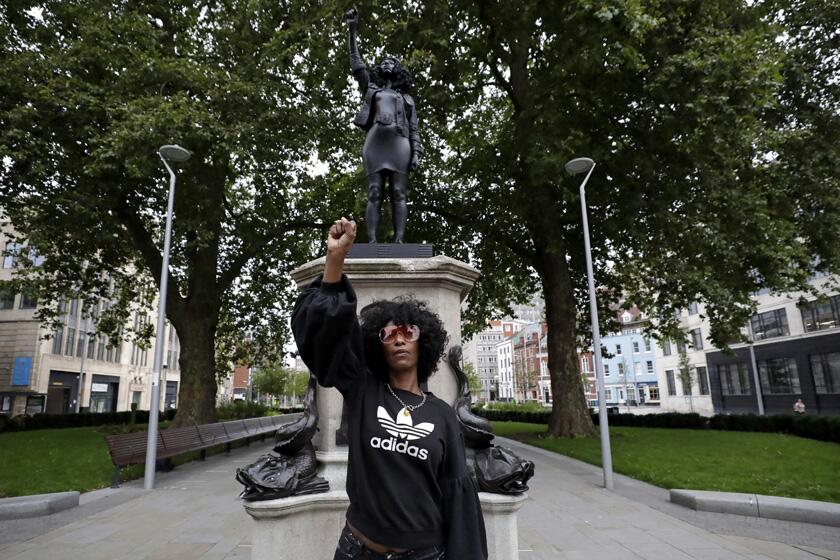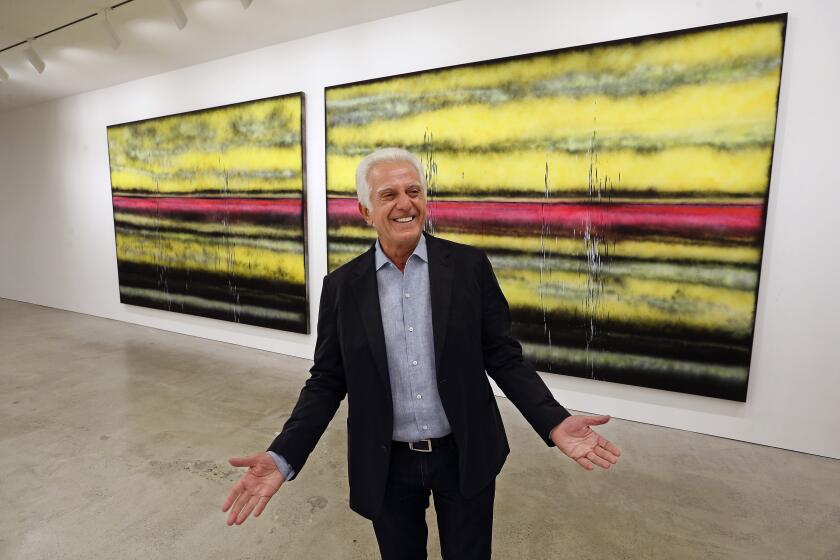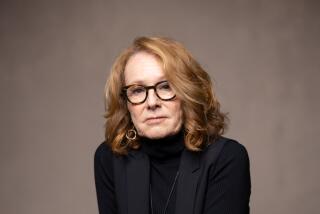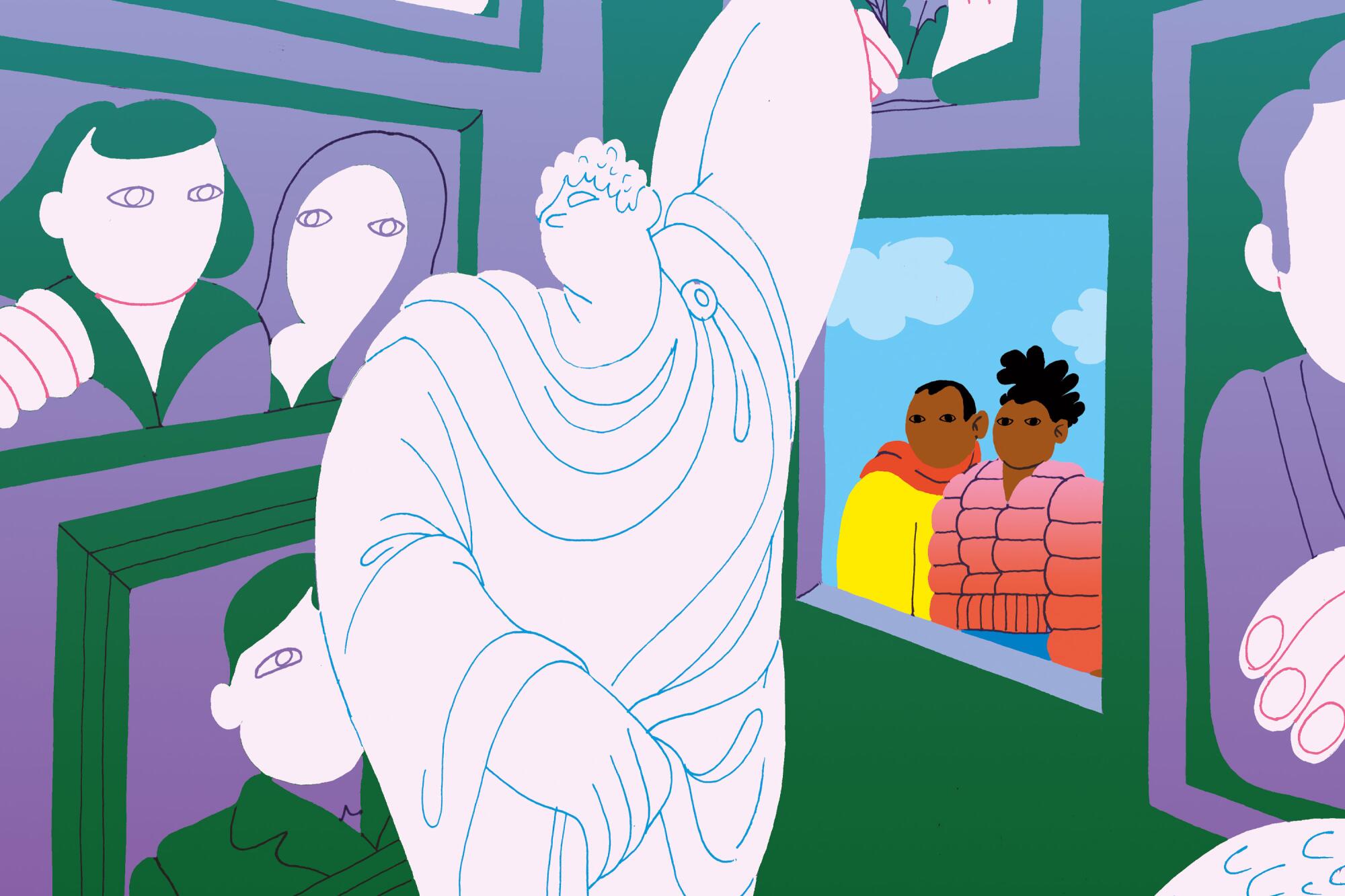
“Are art museums racist?”
That is the question asked by curator and critic Maurice Berger in a famous essay that bears that fraught yet simple inquiry as its title. He then laid out the ways in which white-led arts institutions had excluded and misrepresented the voice of Black artists over time.
For the record:
1:38 p.m. Oct. 22, 2020In an earlier version of this story, the Hammer Museum’s Erin Christovale was labeled an assistant curator. She is an associate curator.
“Who are the patrons of art, the museum board members, the collectors?” he asked. “Who is the audience for high culture? Who is allowed to interpret culture? Who is asked to make fundamental policy decisions? Who sets the priorities?
“Is the art world merely mirroring social changes or can art institutions actually play a role in challenging the conditions of institutional racism in America?”
Berger’s essay was published in Art in America in 1990. It might as well have been written yesterday.
The COVID-19 pandemic, combined with the uprisings in the wake of the killing of George Floyd in Minneapolis, led to a summer of turmoil that in this fraught election season has not only revealed the fragile financial foundations on which many arts institutions rest (especially small ones), but laid bare the institutional inequities embedded in their structures.
Around the country, pandemic closures have induced an avalanche of museum layoffs that have most frequently targeted workers at the bottom. In the meantime, leadership teams have largely held on to their posts and, in some cases, their perks. Moreover, the Floyd moment has put a glaring spotlight on diversity: 30 years after Berger’s essay was published, museum staffs, on average, remain overwhelmingly white.
Collectively run social media feeds like Art + Museum Transparency and @changethemuseum have served as public catalogs of pay inequity and straight-up racism. This summer, the list of open letters condemning management practices at museums has been long and illustrious, targeting the Guggenheim Museum in New York, the New Orleans Museum of Art in Louisiana, the San Francisco Museum of Modern Art and the Getty Trust in Los Angeles, to name but a few.
This lands amid broader calls for structural change.
“I look at this as a reckoning,” says Joe D. Horse Capture, a curator and vice president at the Autry Museum of the American West. “There have been practices and perspectives in museums that people say, ‘Oh, that’s not acceptable,’ and then they move on. Whereas now, they say, ‘That’s not acceptable, and let’s do something about it.’”
A 484-page examination by MoMA shines a light on the history of race in the museum’s programming and also its internal politics
The push for change is not just on outward representation of the artists a museum features in its exhibition program. It’s also aimed at how museums are structured and governed.
“There are two uprisings against museums,” says Nizan Shaked, a professor of art history and museum studies at Cal State Long Beach. “One is around economics and the ethics of wealth, and the other is around issues of race and historical discrimination, and they meet at the infrastructural level.”
Now, as institutions in some cities begin to reopen — though not yet in Los Angeles County — the question is in what form they will begin to reemerge.
Shouldn’t public monuments have public input? In the George Floyd moment, artists and designers are changing the nature of monuments and the histories they honor.
“There is so much disruption that it’s hard to tease out the different things,” says Laura Lott, president and chief executive of the American Alliance of Museums (AAM), an advocacy group based in Washington, D.C. “It’s all overlapping and interrelated.”
COVID and inequity
Let’s start with the finances.
A survey conducted by AAM in June showed that 33% of museums may not be able to survive the pandemic without additional financial support. And with a new congressional stimulus bill still uncertain at press time, chances are additional paycheck protection loans will not be landing any time soon.
“Our survey shows that more than 40% of the museums anticipated reopening with a reduced number of staff,” Lott says. “There are significant cuts, and they vary by type and size of museum.”
Before the pandemic, labor had already been a simmering issue. Recent years have seen high-profile unionization campaigns at the Guggenheim and the New Museum in New York, the Milwaukee Art Museum in Wisconsin and the Museum of Contemporary Art in Los Angeles. Plus, there was the case of L.A.’s Marciano Art Foundation, which shut down rather than negotiate with unionizing employees.
Fast-forward one novel coronavirus and you have a veritable bloodletting.
New York museums such as the Guggenheim and the New Museum have shed staff. So has the wealthy Metropolitan Museum of Art, which has an estimated endowment: $3.1 billion. Its staff is now 20% smaller than when the pandemic began.
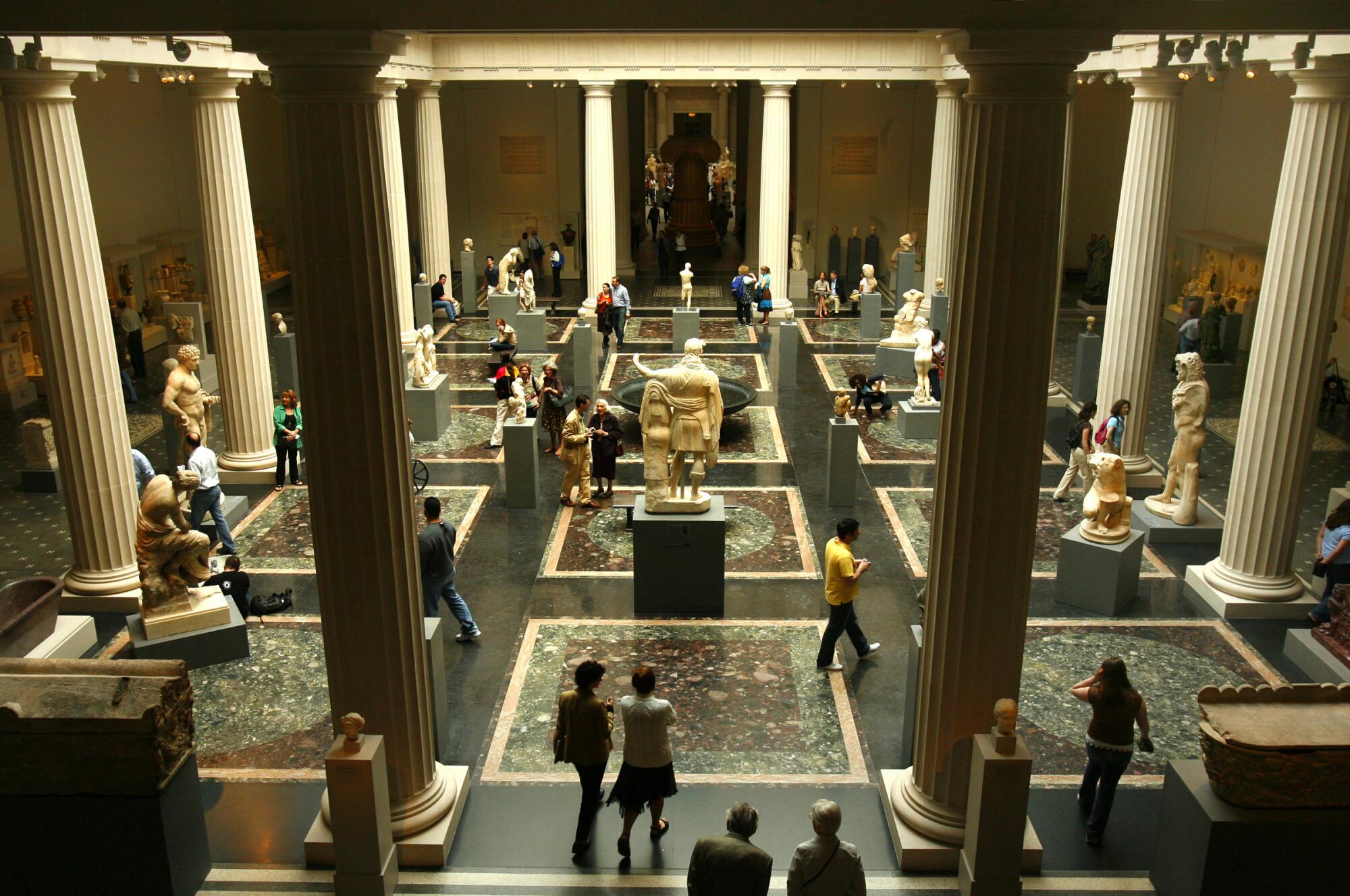
In Los Angeles, the Huntington Library, Art Museum and Botanical Gardens has eliminated staff, as has MOCA, which laid off all of its part-timers in March — including members of the museum’s newly established labor union. (MOCA Director Klaus Biesenbach and a representative for the union say that contract negotiations have nonetheless been ongoing. “MOCA still recognizes the union,” Biesenbach states via email.)
In addition, this month, the Los Angeles County Museum of Art, which had thus far avoided employee cutbacks, quietly laid off fewer than 10 employees working in on-site membership sales.
“The job functions that are most affected — guest services and front-line staff — my sense is that people of color are being disproportionately affected by those cuts,” Lott says. “That is exacerbating those questions of equity.”
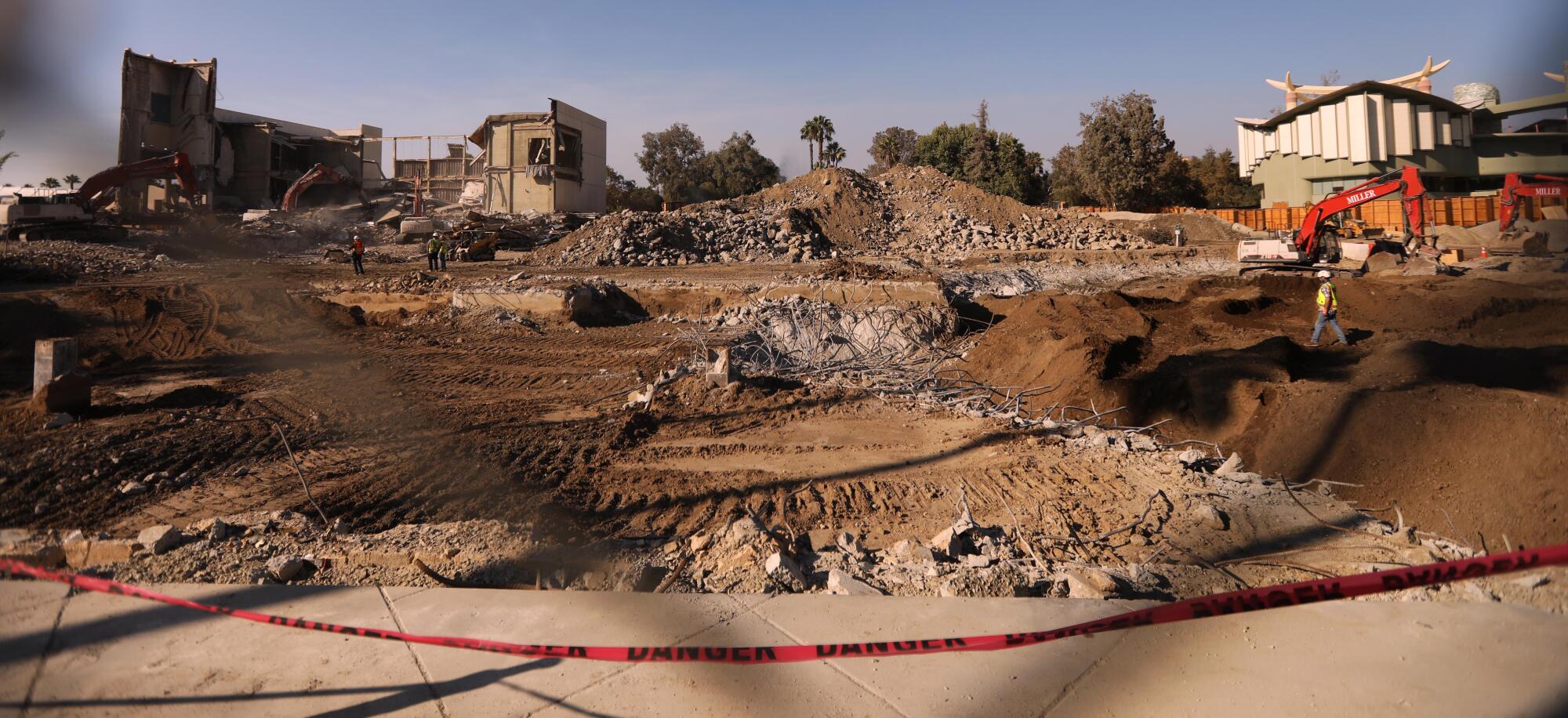
It will be a challenge, she says, for museums to reckon with equity while “also making deep cuts both in terms of staffing and budgets.”
It’s a challenge museums across the country will have to find a way to surmount, says Erin Christovale, an associate curator at the Hammer Museum, one of two Black curators on staff.
“If you hold power to this space, are you going to lean in and try to educate yourself?” she asks. “Because if not, museums will become relics.”
Summer of turmoil
For many museums, facing that question has been a bumpy ride.
Despite making advances in recent years, the presence of Black, Latinx, Asian and Indigenous staff at many institutions, especially in the curatorial and leadership ranks, remains slim.
According to a survey published by the Mellon Foundation in 2018, 16% of curatorial staffs are people of color (the term used in the data). Those figures don’t come close to reflecting the demographics of the U.S. — which is about 40% people of color, according to recent census estimates. And it certainly doesn’t come close to reflecting the diversity of U.S. urban areas, where many major museums are located.
If you hold power to this space, are you going to lean in and try to educate yourself? Because if not, museums will become relics.
— Erin Christovale, curator, Hammer Museum
This came to the fore in the wake of Floyd’s death, when some institutions put out feel-good public relations statements accompanied by images of work by Black artists — and were met with withering criticism.
In June, an Instagram post by the Palm Springs Art Museum featuring a sculpture by Alison Saar drew a sharp rebuke from Latinx former curatorial assistant Andrea Romero in the form of an open letter: “There is no commitment to concrete and direct action against racism and anti-Blackness at your institution.” It was signed by more than 250 artists and art professionals.
The San Francisco Museum of Art faced its own uproar over an Instagram post in May, when it deleted comments critical of the institution by Black former staffer Taylor Brandon. SFMOMA Director Neal Benezra ultimately apologized and, two months later, the museum’s senior curator Gary Garrels resigned after saying that it would be “reverse discrimination” to temporarily stop collecting the work of white men while the collection achieved parity.
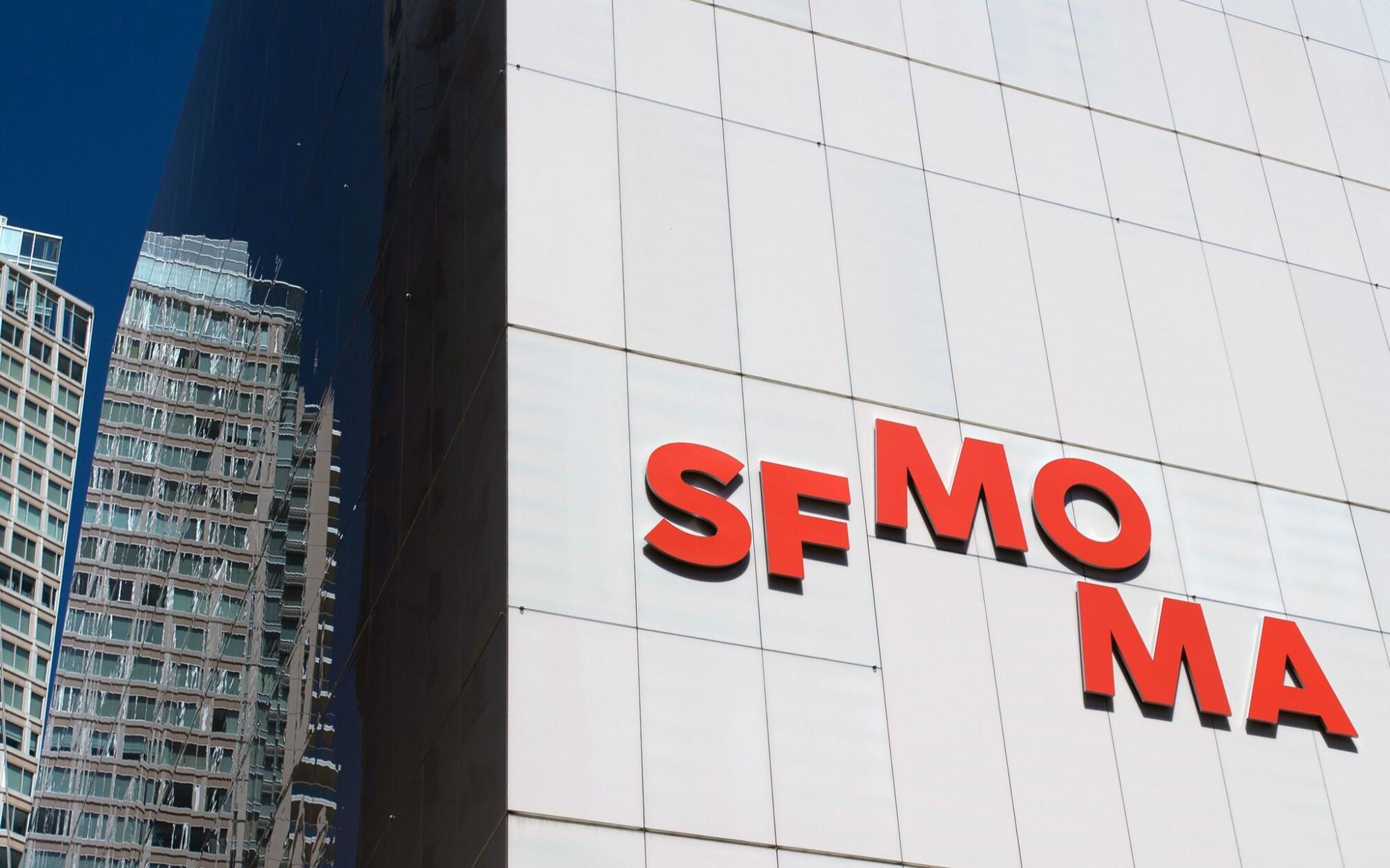
None of it was a good look for an institution that in 2019 declined to tell the San Francisco Chronicle whether there were any African American curators on staff. In addition, SFMOMA has been criticized for the amount of real estate it has devoted to showing the private Fisher Collection — it built a $305-million wing for it — which is focused on artists of the blue-chip, white-male variety. (When I attended the opening of the new wing in 2016, there was an entire floor that didn’t contain a single work by a woman.)
The Palm Springs Art Museum didn’t return a request for comment. And a spokeswoman for SFMOMA said that museum leadership was preoccupied with reopening and wouldn’t be able to attend to my queries. SFMOMA did, however, issue a statement in July announcing a diversity plan and the hiring of two new directors to oversee employee experience and diversity and inclusion. Still, the executive team additions come at a time the museum has laid off staff and implemented furloughs.
Starting at the top
Certainly, it will take more than a couple of hires to shift the ways museums are governed.
“I think what museums really need to be thinking through right now is that, beyond just hiring us, how can you support us?” asked the Hammer’s Christovale recently on UCLA’s “Works in Progress” podcast. “And how might that support look and feel different than the traditional support that you’ve offered your curators?”
She tells The Times that “mentorship is a start.” A mentorship “that comes with a lived experience that you can understand, relate to, learn from. Those nuances and dynamics are crucial to us in terms of understanding how we can operate in these spaces.”
For a young Black curator, those mentors can be startlingly few. “I think of Thelma [Golden, director of the Studio Museum in Harlem] and Lowery Stokes Sims [formerly of New York’s Museum of Arts and Design],” she says. “But, at the end of the day, I can count them all on one hand.”
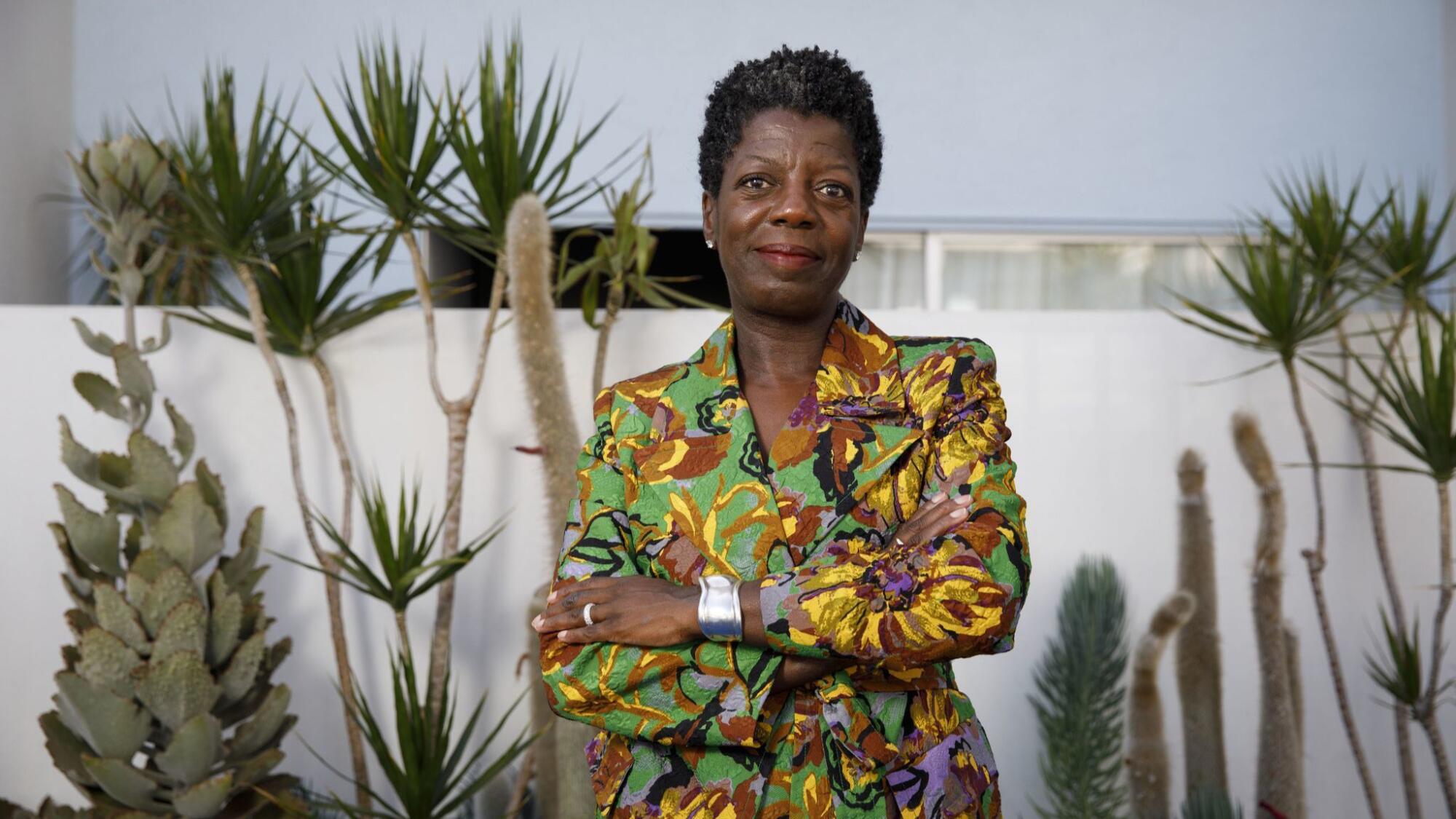
That raises the question of who is running the show at U.S. museums. The Mellon report shows representation at the highest ranks remains stubbornly white, with only 12% of museum leadership roles occupied by people of color in 2018 — a negligible 1% increase since 2015.
At the Getty Trust — the entity that governs the J. Paul Getty Museum, the Getty Research Institute, the Getty Conservation Institute and the Getty Foundation — the stats are even worse. Senior leadership is entirely white, despite at least three opportunities over the last three years to add diverse executives to the mix as others have left or retired.
Across the Trust’s 1,400 employees, 29% identify as BIPOC (Black, Indigenous, people of color), including security and visitor services associates. Those numbers thin out when it comes to professional positions that direct programming. At the Getty Museum, only 11% of the curatorial staff identifies as BIPOC — five points below the national average, in a county in which one in two residents is Latino.
In July, staff at the Getty Trust sent an open letter to management decrying the lack of diversity and an atmosphere in which individuals from underrepresented groups were made to feel “unwelcome” and were “too rarely given positions of power.” It also criticized careless remarks by members of management and a lack of investment in diversity and inclusion initiatives.
“We are incredibly privileged,” says the museum’s Director Tim Potts. “We are not threatened financially, the way other institutions are.” (The Getty has not furloughed or laid off staff during the pandemic.) “But the issues — the profile, the lack of diversity — it’s as dramatic and as problematic as it is for other institutions.”
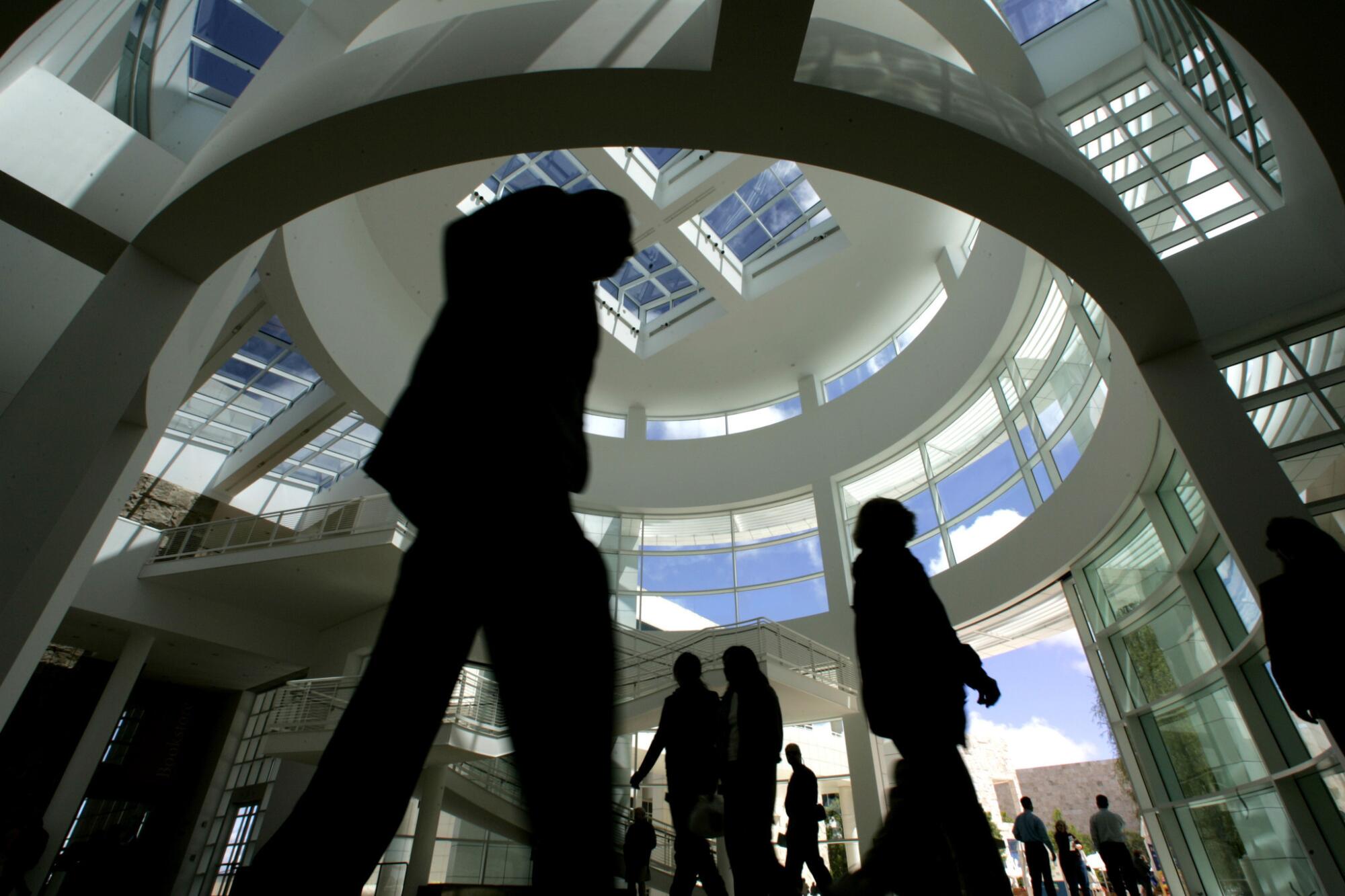
The Getty had begun to tackle its diversity problem before the uprisings. Early in 2019, it formed a Diversity, Equity and Inclusion Council. Last month, the museum publicly released a 12-page draft plan for how it might tackle its shortcomings. It includes adopting anti-racism policies, conducting regular pay equity studies, publishing an annual diversity report and establishing “a more robust exit interview process” to better understand why some BIPOC staff don’t stick around.
Potts says that the museum is preparing to post two new positions for which “every effort to find diverse candidates” will be made. He says the institution is also working to re-imagine how a museum whose principal mandate is to collect European art made before 1900 might become more programmatically diverse.
Protests against racism after the killing of George Floyd demonstrate inequities in public space too often designed for white people. How to change that.
Some of this will mean nose-to-the-grindstone research: finding and acquiring work by women and other marginalized artists. It also will involve exploring the ways in which some of these themes might manifest in the works already held (a recent show was devoted to portrayals of the Black Magi in medieval and Renaissance art). The museum’s photography program — which extends to the present and includes strong collections of work by Mexican and Japanese American artists — offers further opportunities.
Several Getty staffers interviewed for this story welcomed the museum’s detailed plan but were skeptical about how much change to expect.
“There is a lot of distrust that human resources and senior leadership can be different,” says one employee, who asked not to be identified out of fear of retaliation. “Obviously, if they can accomplish the things on this list, if they can have a more diverse staff that better reflects Los Angeles, that would be an improvement. But are these the people capable of doing that? I don’t know.”
The big bucks
Naturally, you can’t address a museum’s structural issues without also addressing its board of trustees — figures who have a critical role in supporting an institution but also maintaining its inequities.
Well before the pandemic, boards were a target of activists calling into question the unsavory sources of museum patron wealth. This includes Warren Kanders, vice chairman of New York’s Whitney Museum of American Art, who resigned from the museum’s board last year after activists from Decolonize This Place led protests over his company’s manufacture of tear gas. Detroit Pistons owner Tom Gores resigned from LACMA’s board earlier this month over his investment in a prison phone company accused of charging prisoners exorbitant rates for calls.
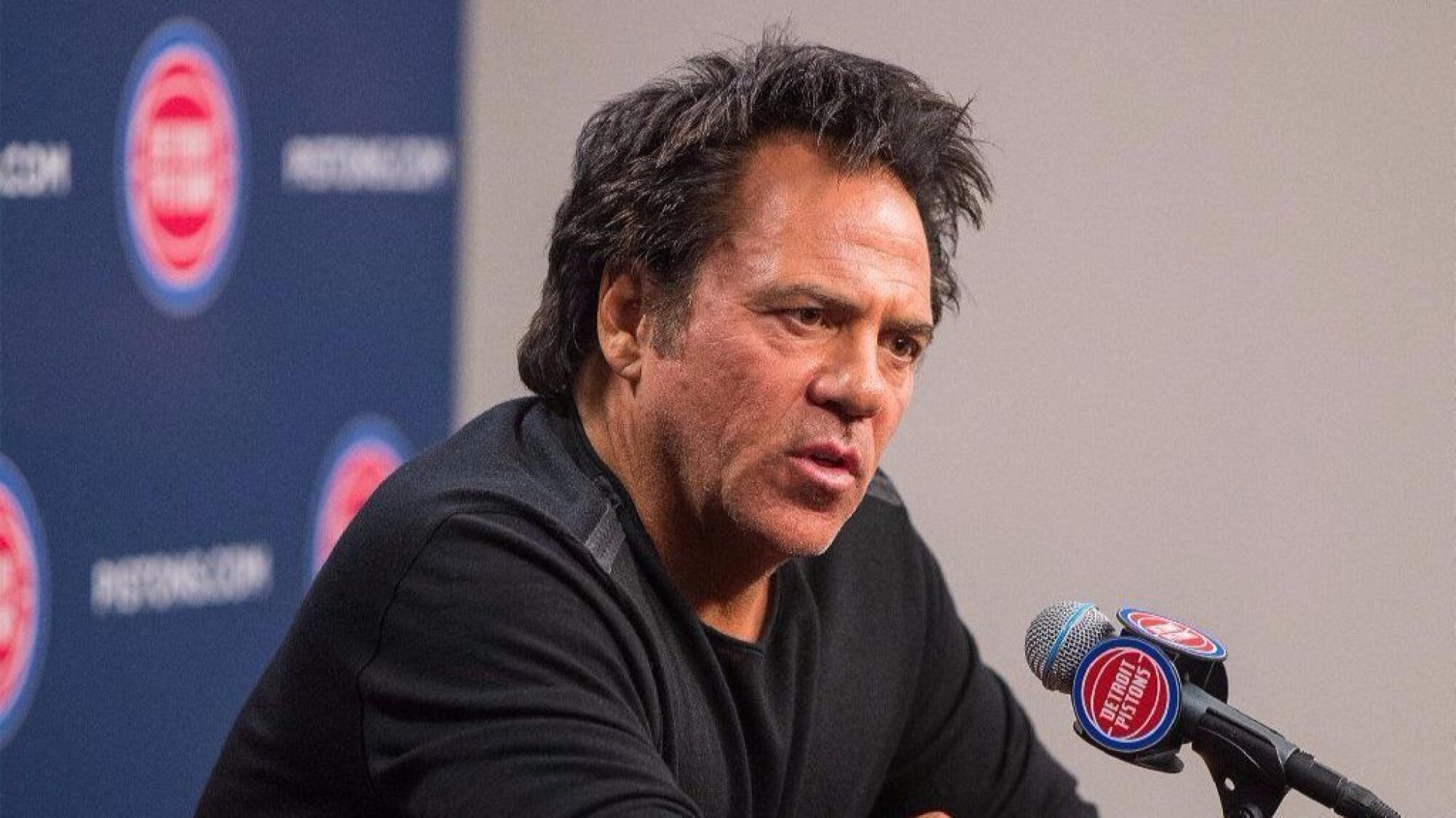
A 2017 survey conducted by AAM shows that 89.3% of museum board members in the U.S. are white. It’s a figure that plays out across L.A. institutions: At MOCA, only four of the 33 voting members identify as BIPOC. At LACMA, the tally is eight out of 53, and at the Hammer it’s four out of 21.Neither the Hammer’s board of trustees nor its board of advisors (which helps manage acquisitions) has a single Latino member.
These powerful groups can have an outsize effect on a museum’s mission, its collecting, its programming and even its physical plant. (Name a bajillionaire who doesn’t like slapping his name on a new building.) It’s a system, writes artist Andrea Fraser in her book “2016 in Museums, Money and Politics,” which examines the political giving of museum trustees around the country, that “may serve to perpetuate and legitimize the economic inequality and privation that underlies so many of the social problems philanthropic organizations aim to solve.”
The Marciano Art Foundation opened in 2017 as L.A.’s newest center for culture. Its abrupt and mysterious closure came less than three years later. What happened?
CSULB’s Shaked says conflict of interest on these boards often runs high: Acquisitions can be driven by board members who are also collectors and therefore have an interest in promoting the work of the artists they collect.
“They need to separate wealth from decision-making,” Shaked says. “We cannot have these institutions governed by people who are only wealthy collectors. They need other stakeholders on their boards: scholars and artists and historians.”
Some museums have made small moves in that direction. LACMA appointed the Studio Museum’s Golden to its board in 2016. More compelling is the model employed by the Hammer, which breaks out duties among different groups: The board of trustees focuses on the big financial picture, while the board of advisors is involved in acquisitions. A separate artist council advises on other issues.
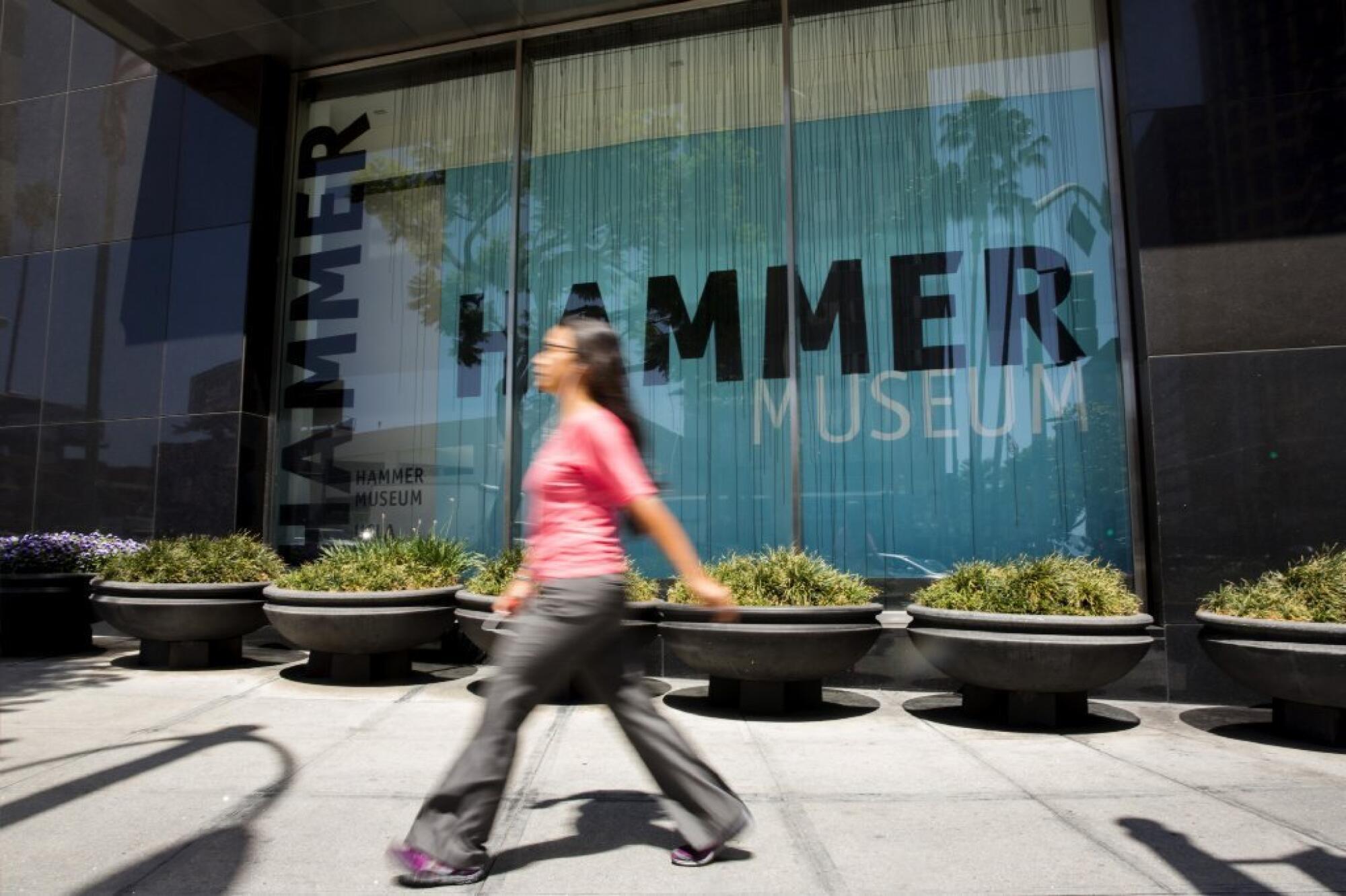
“The diversity and inclusion work that we started about six years ago,” says Hammer chief curator Connie Butler, “came as a challenge from them.”
But many boards have historically put more value in acquisition and expansion than in working on, say, establishing a fund to tackle pay equity.
Museum directors at major institutions often draw six- and seven-figure salaries and may have perks such as free housing or interest-free home loans. Life at the bottom is much leaner. At SFMOMA, Benezra’s total compensation grew by 18% between 2015 and 2017, according to 990 forms filed with the IRS — roughly the same period in which unionized employees were fighting for basic cost of living increases. (Benezra has since taken a 50% pay cut in response to the pandemic’s financial toll.)
The past 18 months have seen a wave of labor organizing campaigns that have drawn attention to gallery attendants in major metro areas whose earnings barely crack minimum wage. Entry-level curatorial jobs, which generally require advanced degrees, often start at levels the U.S. Department of Housing and Urban Development would classify as “low income” in most U.S. cities. (The average entry-level salary of a curatorial assistant in the United States is $42,458, according to a 2017 study by the Assn. of Art Museum Directors — a sum that would be considered “low income” in L.A. and “very low income” in San Francisco.)
Recently, the Baltimore Museum of Art made headlines when it announced it would deaccession three paintings by Brice Marden, Clyfford Still and Andy Warhol for an estimated $65 million in order to establish an endowment to make up for income disparities at the museum.
“It was not defensible to make broad equity claims, do a Mark Bradford exhibition in our galleries, then pay a guard $13.50 an hour to guard these priceless works of art,” the museum’s director, Christopher Bedford, says. “That’s not the spirit of this institution.”
The goal, he says, is to raise the entry-level hourly wage of front of house staff to $20 per hour, for an annual wage of almost $42,000 by July 2022. (Currently, a guard making $13.50 an hour takes home $28,000 year — in the “very low income” category within the city of Baltimore, according to HUD.)
It’s an admirable goal. A worker at a prestigious museum shouldn’t have to have two full-time jobs merely to survive. But the sale has drawn the ire of critics, partly over possible procedural irregularities. It also, as Times art critic Christopher Knight noted in a recent story, lets the board off the hook of building an institution that is more equitable.
A fiscally robust museum plans to fund operations by selling $73 million of its art. The scope of the move threatens to accelerate a troubling trend.
“Every museum director knows that it’s easier to raise money for the sexier initiatives than for the endowment intended to fund operations,” Bedford says.
Case in point: LACMA laid off a small group of front-line workers even as it moves ahead with a mammoth $750-million rebuilding plan, and no executives took pay cuts.
But unless institutions demand more of their trustees, real change is not going to come.
Surely, if a few randos on the internet can pool $10,000 to help out a Fleetwood Mac-lip-syncing skateboarder in Idaho, then the finest minds in philanthropy can figure out how to build a funding model that affords museum guards a dignified wage. For if boards are going to talk equity, they need to be willing to fund it too.
“Museum leadership,” Shaked says, “needs to storm the Bastille.”
Small changes
It’s been a time for thinking creatively about how museums might reorganize.
Curators such as Yesomi Umolu, the organizer of last year’s Chicago Architecture Biennial, and La Tanya S. Autry, who helped lead the #MuseumsAreNotNeutral public awareness campaign, have written and lectured on how museums might pick up and move forward. At Cal State Long Beach, museum studies faculty have organized online talks engaging these issues. And a Hammer Museum series titled “Reimagining the Museum” looks at how museums might implement more equitable practices.
“It’s parallel to conversations that are going on inside the museum,” the Hammer’s Butler says. “You cannot have the conversation in public unless you are having it personally too.”
Three of the Hammer’s eight curatorial staffers are BIPOC — representation that is more than double the national average. But the museum has weak spots. In Mexican L.A., its solo exhibition program has long overlooked Chicano artists. Says Butler: “There is much work we have to do.”
If boards are going to talk equity, they need to be willing to fund it too.
— Carolina A. Miranda
Aruna D’Souza, author of “Whitewalling: Art, Race & Protests in 3 Acts,” notes that this work can begin with small acts.
“The most innocent-looking things can change an institution, like working from home or being flexible in schedules or leave policy,” she says. “You talk to people in the disability community who say, ‘We’ve been asking to work from home for years and were told it’s not tenable. And now everybody is working from home and it’s fine.’ That’s the interesting thing about the pandemic — all of the things that we were told were impossible, they are possible.”
At SFMOMA, the museum’s union has been pitching an apprenticeship for art handlers, the workers who install art in museums. That area remains largely white and male, says Nat Naylor, an organizer with the Office and Professional Employees International Union, Local 29. “We want to make it more diverse.”
Smaller institutions, in particular, are rife with experimentation.
At the California African American Museum, Deputy Director Cameron Shaw has been working to develop more collaborative models of decision-making so that employees at all levels can have a greater voice in the institution.
“There’s this myth of the lone-wolf artist and the genius curator, and that really undermines the ability for our institutions to be living in their values,” she says. “I think it’s really important that we debunk those myths.”
Collective methods of working are also changing the ways some institutions work with their audiences.
Horse Capture, a member of the A’aninin tribe of Montana, who oversees the extensive Native Collections at the Autry, is known for integrating Indigenous communities into every step of the curatorial process — groups that have been historically marginalized by the museums in the past.
“For me, a curator isn’t someone who sits in a room with a big pile of books,” he says. “For me, part of this is to engage with Native communities so that we can partner to tell a story.”
It’s a move that can take an institution regarded as remote temple into lively shared forum.
Heart of the matter
In his 1990 essay, Berger wrote that in “regard to race, art museums have for the most part behaved like many other businesses in this country — they have sought to preserve the narrow interests of their upper-class patrons and clientele.”
It is that very issue that is now on the table.
At a recent tribute to Berger (who died in March), organized by the Vera List Center for Art and Politics at the New School in New York, journalist David Gonzalez, a longtime friend of Berger’s, said that a lot of what the critic wrote made people uncomfortable: “We’re dealing with a structure that fosters this, and structures aren’t, you know, relieved or made better or broken by an internship, a fellowship or a committee on diversity.”
In recent months, museums have taken some steps — baby steps. But real change is going to take more than waving around the work of BIPOC artists like some diversity flag. As Berger noted, it will take some intense self-reflection and real infrastructural shifts. Then, and only then, will museums begin to live up to their stated ideals.
Jacqueline Stewart, University of Chicago historian and first Black host of TCM’s “Silent Sunday Nights,” leads exhibitions, programming and education.
More to Read
The biggest entertainment stories
Get our big stories about Hollywood, film, television, music, arts, culture and more right in your inbox as soon as they publish.
You may occasionally receive promotional content from the Los Angeles Times.
